Effects of CuZnAl Particles on Properties and Microstructure of Sn-58Bi Solder
Abstract
:1. Introduction
2. Experimental Procedures
3. Results and Discussion
3.1. CuZnAl Particles
3.2. Wettability
3.3. Melting Characteristic
3.4. Microstructure of Solder Bulk
3.5. Interfacial IMC Layer
4. Conclusions
Acknowledgments
Author Contributions
Conflicts of Interest
References
- Çadırlı, E.; Böyük, U.; Kaya, H.; Maraşlı, N. Determination of mechanical, electrical and thermal properties of the Sn-Bi-Zn ternary alloy. J. Non Cryst. Solids 2011, 357, 2876–2881. [Google Scholar] [CrossRef]
- Li, J.; Yuan, Z.F.; Qiao, Z.Y.; Fan, J.F.; Xu, Y.K.; Ke, J.J. Measurement and calculation of surface tension of molten Sn–Bi alloy. J. Colloid Interface Sci. 2006, 297, 261–265. [Google Scholar] [CrossRef] [PubMed]
- Myung, W.R.; Kim, Y.; Jung, S.B. Mechanical property of the epoxy-contained Sn-58Bi solder with OSP surface finish. J. Alloys Compd. 2014, 615, S411–S417. [Google Scholar] [CrossRef]
- Chen, W.X.; Xue, S.B.; Wang, H. Wetting properties and interfacial microstructures of Sn-Zn-xGa solders on Cu substrate. Mater. Des. 2010, 31, 2196–2200. [Google Scholar] [CrossRef]
- Fukuda, M.; Imayoshi, K.; Matsumoto, Y. Effect of polyoxyethylenelaurylether on electrodeposition of Pb-free Sn-Bi alloy. Electrochim. Acta 2001, 47, 459–464. [Google Scholar] [CrossRef]
- Rizvi, M.J.; Bailey, C.; Chan, Y.C.; Lu, H. Comparative wetting behavior of Sn-0.7Cu and Sn-0.7Cu-0.3Ni solders on Cu and Ni substrates. In Proceedings of the Electronics Systemintegration Technology Conference, Dresden, Germany, 5–7 September 2006; pp. 145–151. [Google Scholar]
- Han, Y.D.; Jing, H.Y.; Nai, S.M.L.; Xu, L.Y.; Tan, C.M.; Wei, J. Temperature Dependence of creep and hardness of Sn-Ag-Cu lead-free solder. J. Electron. Mater. 2010, 39, 223–229. [Google Scholar] [CrossRef]
- Lee, S.F.; Goh, Y.; Haseeb, A.S.M.A. Effects of stacking sequence of electrodeposited Sn and Bi layers on reflowed Sn-Bi solder alloys. In Proceedings of the IEEE/CPMT International Electronics Manufacturing Technology Symposium, Ipoh, Malaysia, 6–8 November 2012; pp. 1–6. [Google Scholar]
- Silva, B.L.; Reinhart, G.; Nguyen-Thi, H.; Mangelinck-Noël, N.; Garcia, A.; Spinelli, J.E. Microstructural development and mechanical properties of a near-eutectic directionally solidified Sn-Bi solder alloy. Mater. Charact. 2015, 107, 43–53. [Google Scholar] [CrossRef]
- Lin, S.K.; Nguyen, T.L.; Wu, S.C.; Wang, Y.H. Effective suppression of interfacial intermetallic compound growth between Sn-58 wt% Bi solders and Cu substrates by minor Ga addition. J. Alloys Compd. 2014, 586, 319–327. [Google Scholar] [CrossRef]
- Miao, H.W.; Duh, J.G. Microstructure evolution in Sn-Bi and Sn-Bi-Cu solder joints under thermal aging. Mater. Chem. Phys. 2001, 71, 255–271. [Google Scholar] [CrossRef]
- Ma, D.L.; Wu, P. Effects of Zn addition on mechanical properties of eutectic Sn-58Bi solder during liquid-state aging. Trans. Nonferrous Met. Soc. China 2015, 25, 1225–1233. [Google Scholar] [CrossRef]
- Ma, D.L.; Wu, P. Improved microstructure and mechanical properties for Sn58Bi0.7Zn solder joint by addition of graphene nanosheets. J. Alloys Compd. 2016, 671, 127–136. [Google Scholar] [CrossRef]
- Mokhtari, O.; Nishikawa, H. Correlation between microstructure and mechanical properties of Sn-Bi-X solders. Mater. Sci. Eng. A 2016, 651, 831–839. [Google Scholar] [CrossRef]
- Shiue, Y.Y.; Chuang, T.H. Effect of La addition on the interfacial intermetallics and bonding strengths of Sn-58Bi solder joints with Au/Ni/Cu pads. J. Alloys Compd. 2010, 491, 610–617. [Google Scholar] [CrossRef]
- Shin, Y.S.; Lee, S.; Yoo, S.; Lee, C.W. Mechanical and microstructural properties of SiC-mixed Sn-Bi composite solder bumps by electroplating. In Proceedings of the European Microelectronics & Packaging Conference, European, Rimini, Italy, 15–18 June 2009; pp. 1–4. [Google Scholar]
- Liu, X.; Huang, M.; Wu, C.M.L.; Wang, L. Effect of Y2O3 particles on microstructure formation and shear properties of Sn-58Bi solder. J. Mater. Sci. Mater. Electron. 2010, 21, 1046–1054. [Google Scholar] [CrossRef]
- Liu, X.; Huang, M.; Zhao, N. Effect of Cu6Sn5 particles on microstructure formation and mechanical properties of Sn-58Bi solder. In Proceedings of the Electronic Packaging Technology & High Density Packaging, Guilin, China, 13–16 August 2012; pp. 423–425. [Google Scholar]
- Dong, W.X.; Shi, Y.W.; Xia, Z.D.; Lei, Y.P.; Guo, F. Effects of trace amounts of rare earth additions on microstructure and properties of Sn-Bi-based solder alloy. J. Electron. Mater. 2008, 37, 982–991. [Google Scholar] [CrossRef]
- Sun, L.; Zhang, L.; Xu, L.; Zhong, S.J. Effect of nano-Al addition on properties and microstructure of low-Ag content Sn-1Ag-0.5Cu solders. J. Mater. Sci. Mater. Electron. 2016, 27, 7665–7673. [Google Scholar] [CrossRef]
- Zhang, L.; Xue, S.B.; Zeng, G.; Gao, L.L.; Ye, H. Interface reaction between SnAgCu/SnAgCuCe solders and Cu substrate subjected to thermal cycling and isothermal aging. J. Alloys Compd. 2012, 510, 38–45. [Google Scholar] [CrossRef]
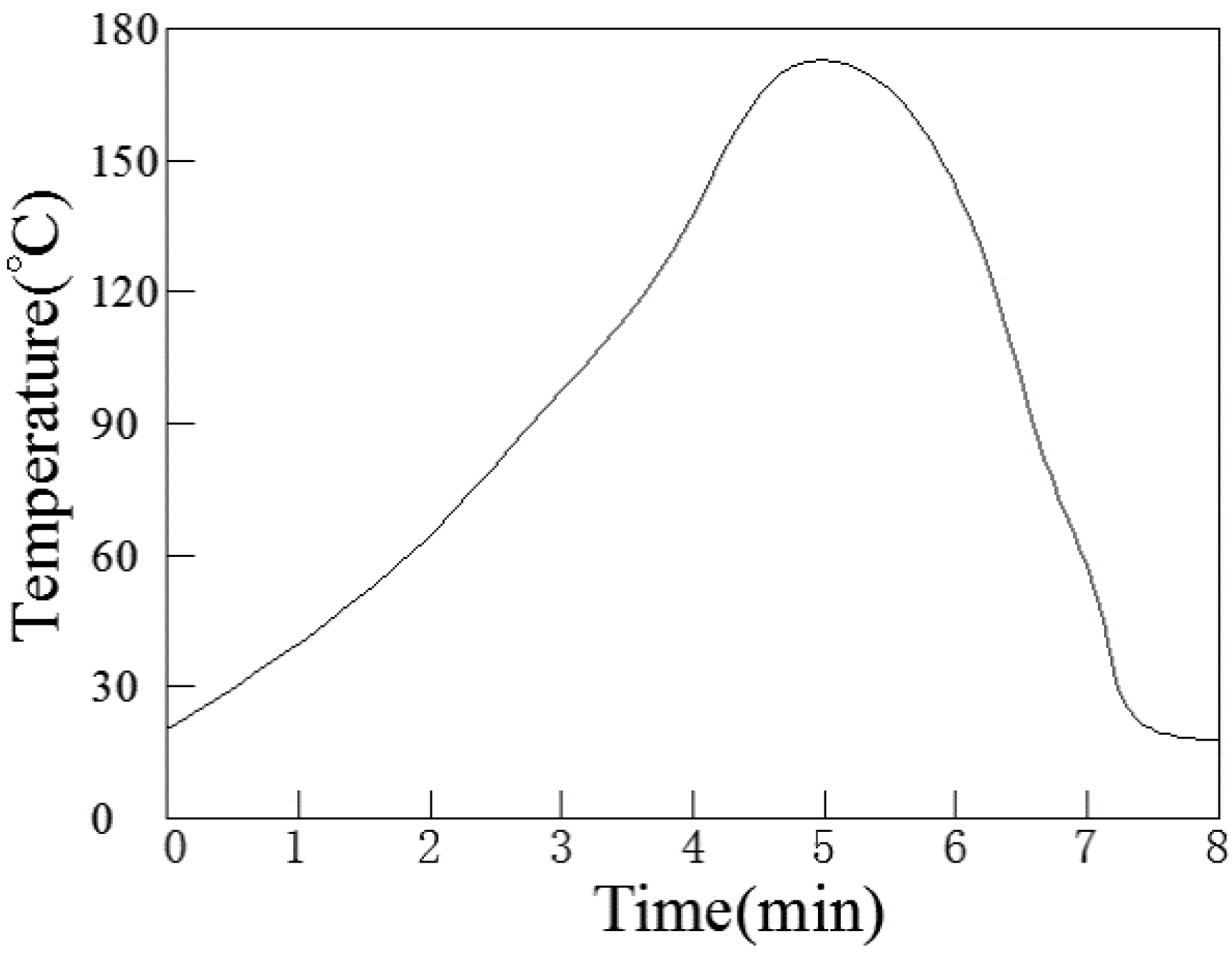

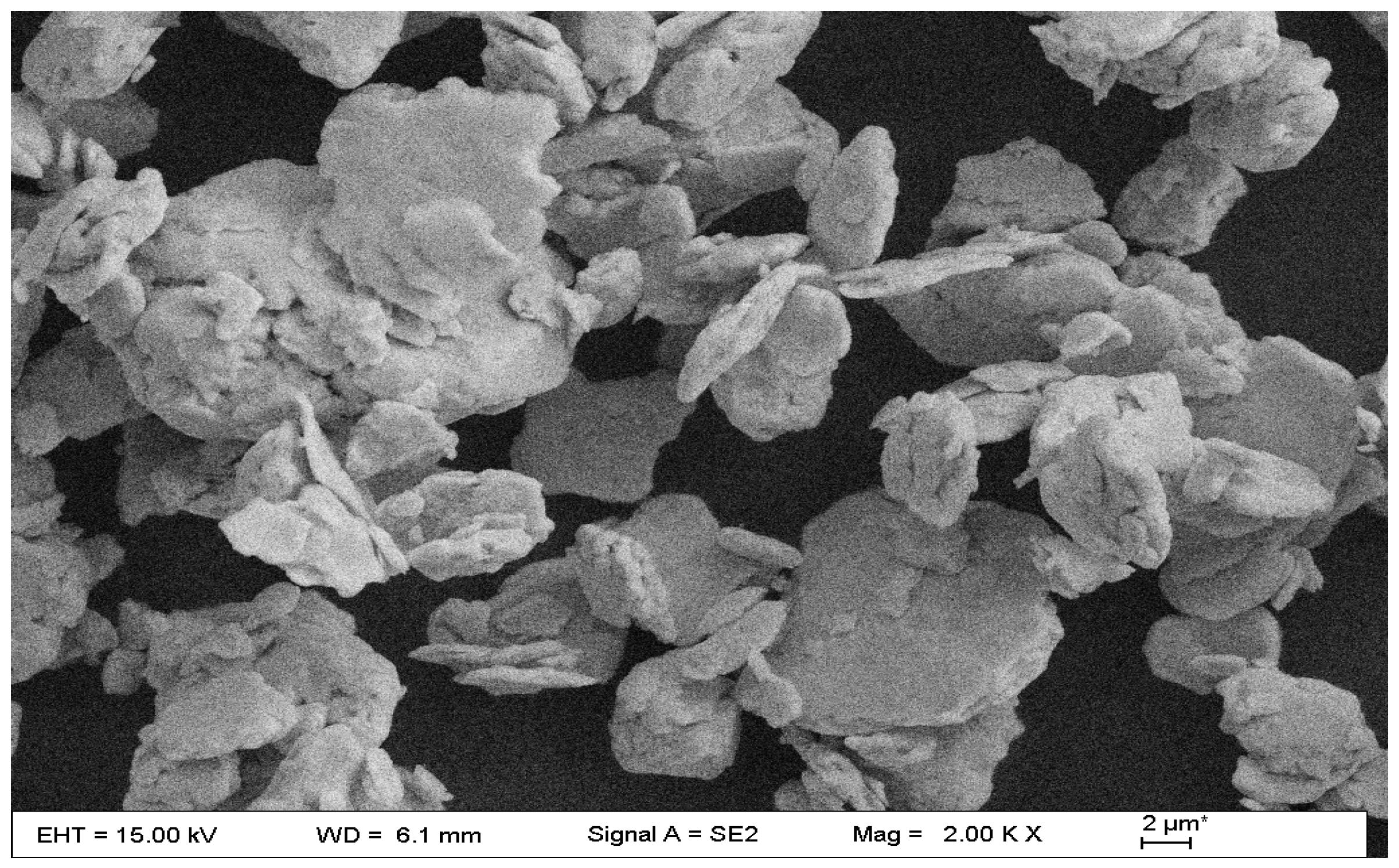
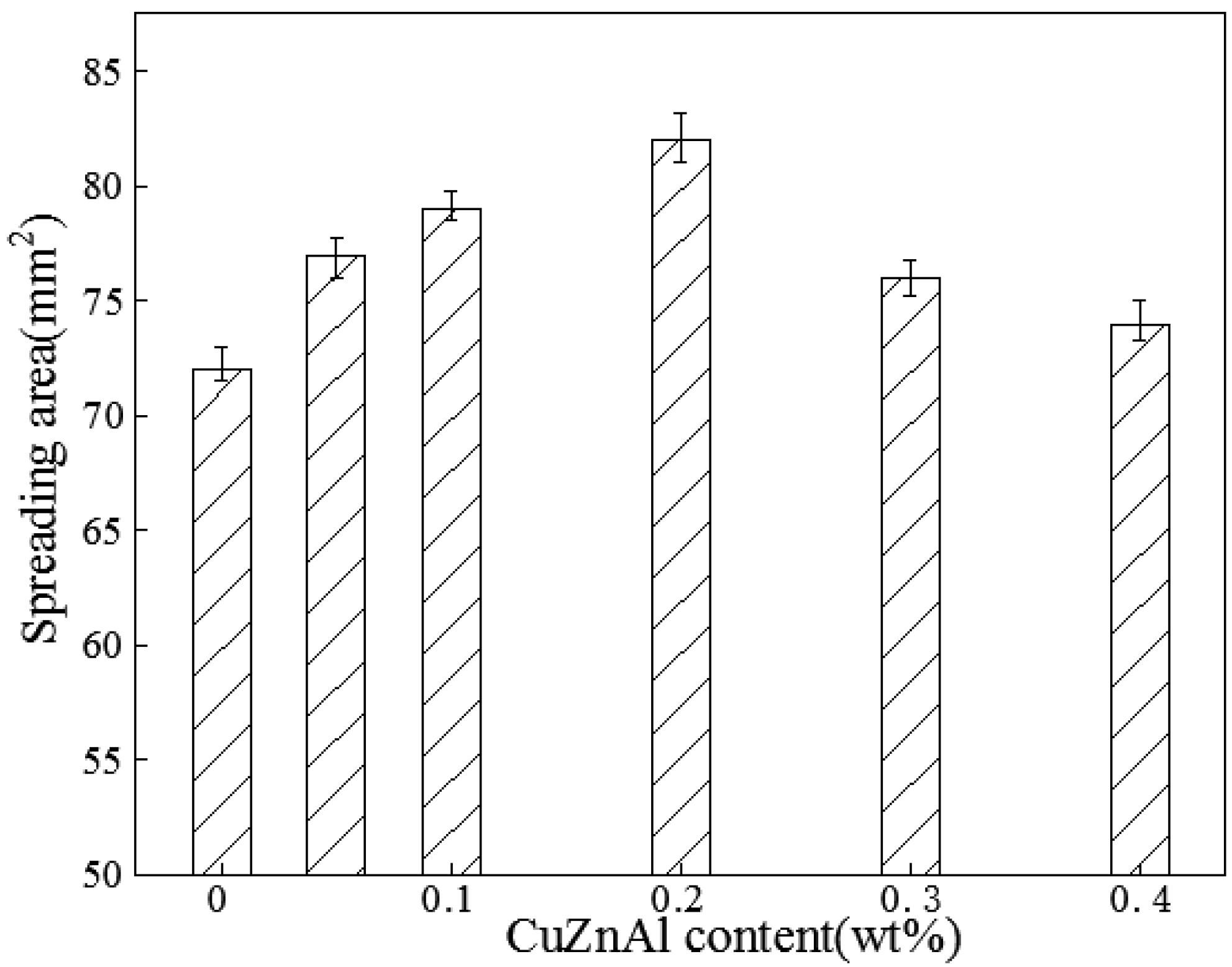
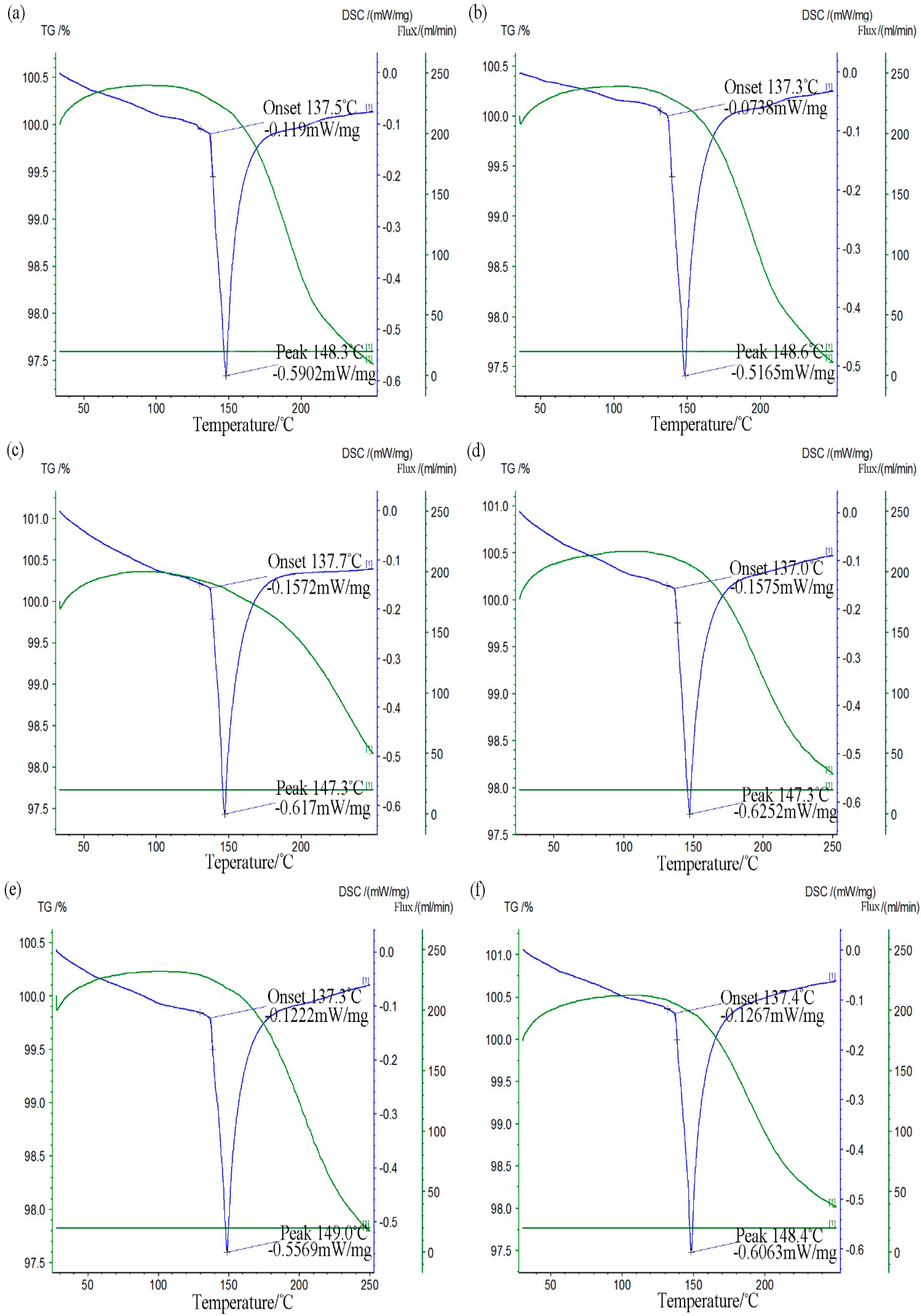
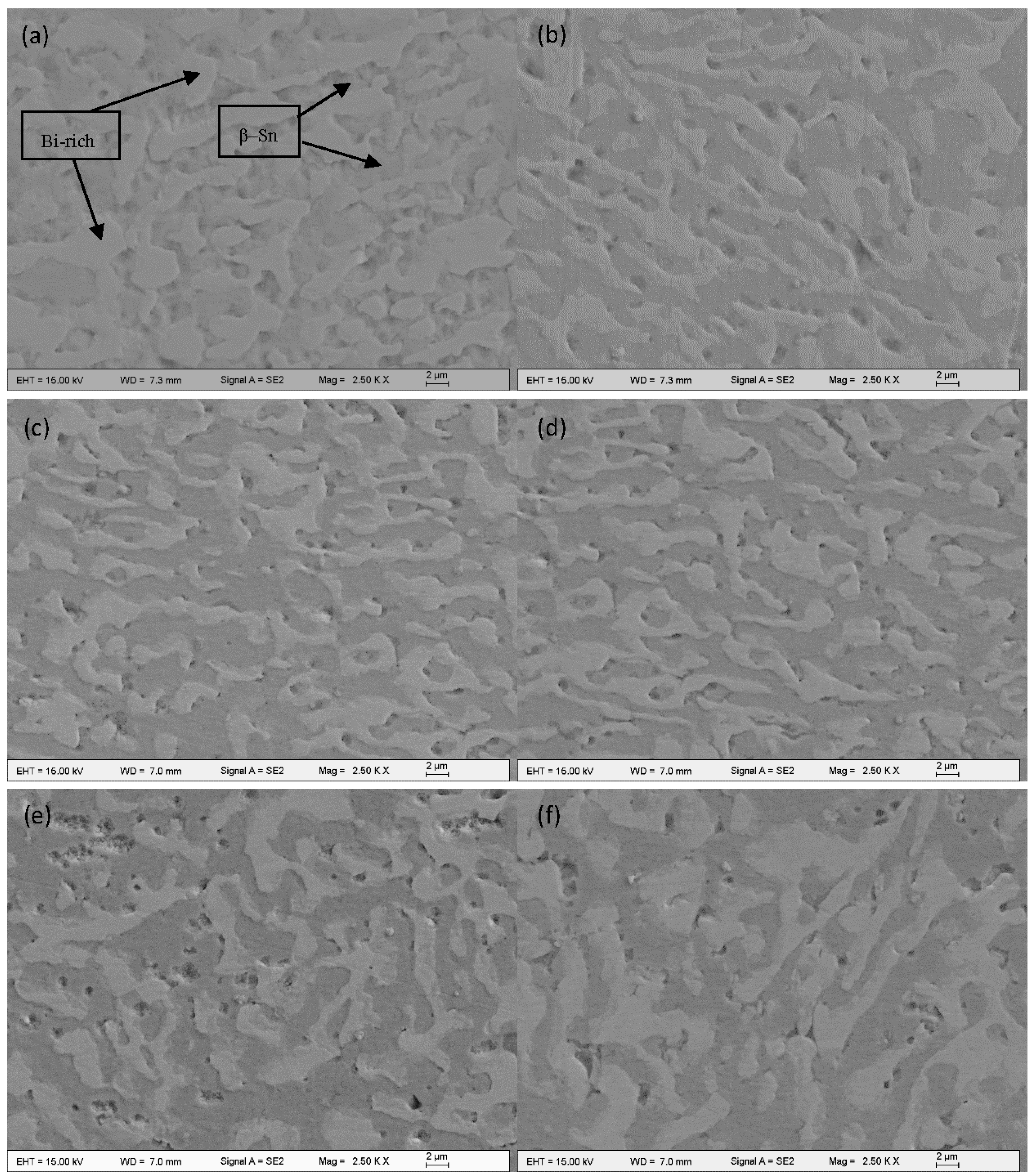
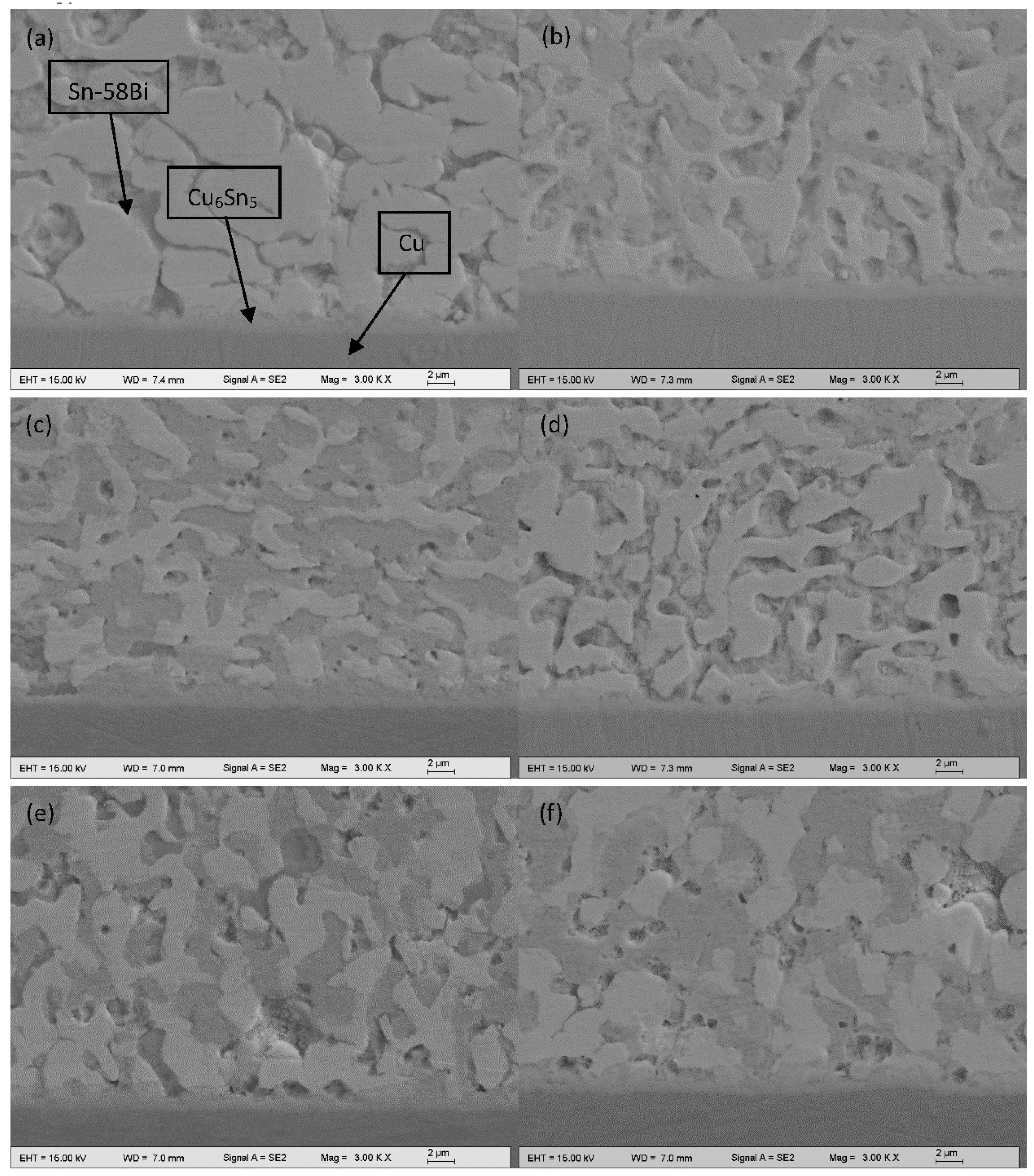
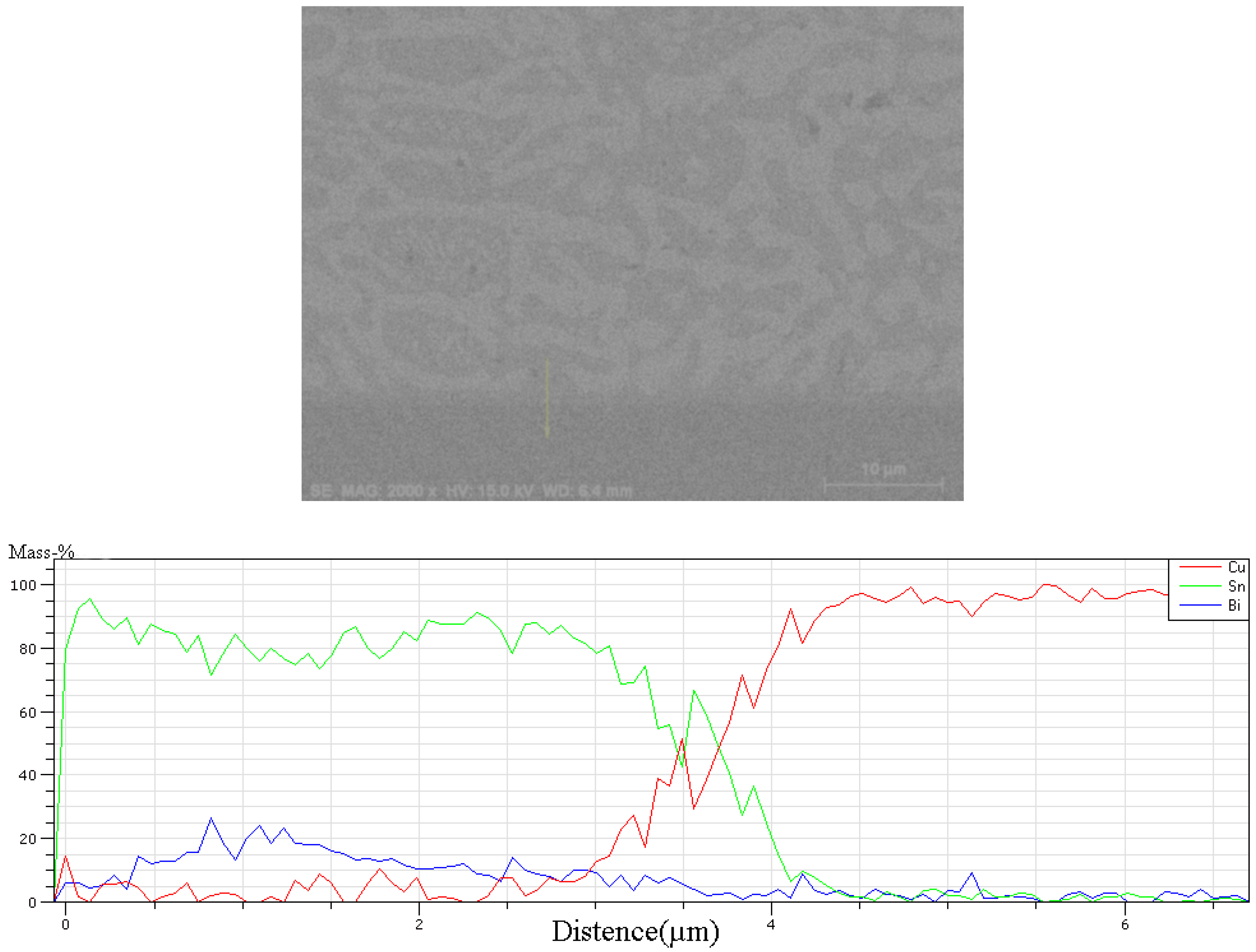
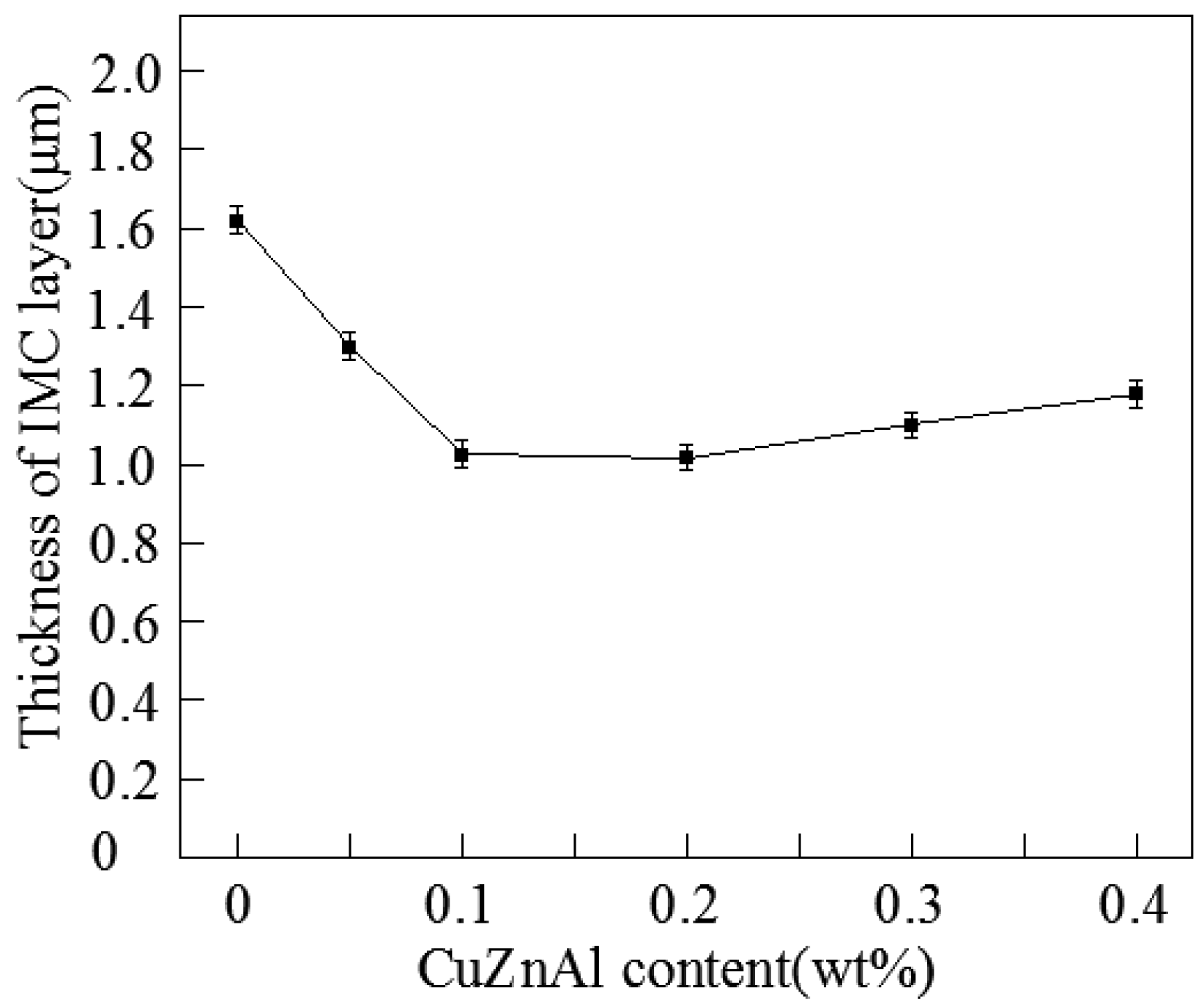
| Sample Number | 1 | 2 | 3 | 4 | 5 | 6 |
| CuZnAl/(wt %) | 0 | 0.05 | 0.1 | 0.2 | 0.3 | 0.4 |
| Initial alloy | Sn-58Bi | |||||
© 2017 by the authors. Licensee MDPI, Basel, Switzerland. This article is an open access article distributed under the terms and conditions of the Creative Commons Attribution (CC BY) license (http://creativecommons.org/licenses/by/4.0/).
Share and Cite
Yang, F.; Zhang, L.; Liu, Z.-q.; Zhong, S.J.; Ma, J.; Bao, L. Effects of CuZnAl Particles on Properties and Microstructure of Sn-58Bi Solder. Materials 2017, 10, 558. https://doi.org/10.3390/ma10050558
Yang F, Zhang L, Liu Z-q, Zhong SJ, Ma J, Bao L. Effects of CuZnAl Particles on Properties and Microstructure of Sn-58Bi Solder. Materials. 2017; 10(5):558. https://doi.org/10.3390/ma10050558
Chicago/Turabian StyleYang, Fan, Liang Zhang, Zhi-quan Liu, Su Juan Zhong, Jia Ma, and Li Bao. 2017. "Effects of CuZnAl Particles on Properties and Microstructure of Sn-58Bi Solder" Materials 10, no. 5: 558. https://doi.org/10.3390/ma10050558





